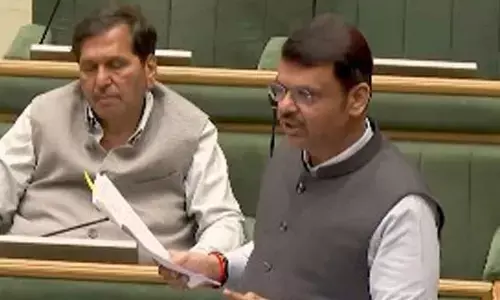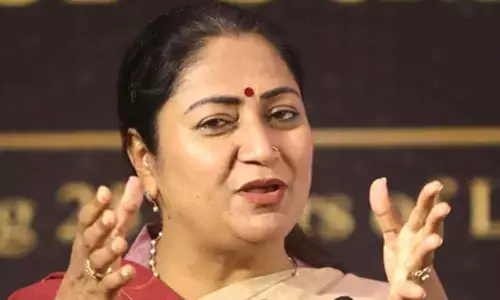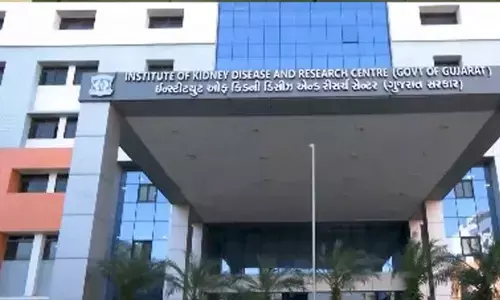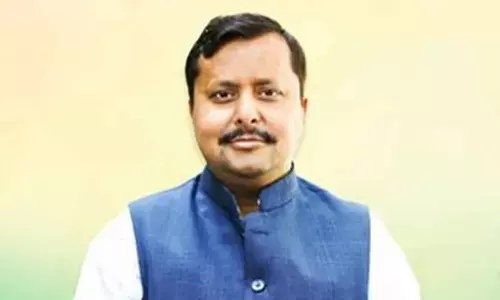KAS Officer ideates an action plan to prevent third wave, suggests door to door vaccination

Dr Vaishnavi K at a vaccination center
Continuing with her efforts to take preventive measures against the widely discussed third wave KAS officer Dr Vaishnavi K has ideated an action plan according to which the way the government on war footing went door to door to give polio drops, similar steps must be taken for Covid vaccination
Continuing with her efforts to take preventive measures against the widely discussed third wave KAS officer Dr Vaishnavi K has ideated an action plan according to which the way the government on war footing went door to door to give polio drops, similar steps must be taken for Covid vaccination.
"Vaccination is the most rational way to prevent C+ infection. The production is at 60 to 70 million doses per month at this rate, 2 years for India to be vaccinated. Therefore increase production focus local companies; increase vaccine purchase," she said.
In order to be geared up to prevent the spread of Covid-19 Vaishnavi said that the GDP spending to be ramped up from 1 to 2.5% to fill the gaps in medical infrastructure.
"The proximity and affordability of Medical care is important. Medical interns to be used under supervision of their faculty in covid duty," she said in the action plan.
"Continuous testing plus treatment plus isolation till vaccine rollout adequate. Testing centres at 1km increases chances of testing as per ICMR study. Covid Appropriate Behaviour (CAB) in public spaces regulatory efforts plus community enabled mobilization plus behavioural changes. Free testing to be encouraged, regulate prices of private covid testing even further," Vaishnavi further elaborated.
During the second wave the nation grappled with the shortage of oxygen. The officer said that the supply of drugs and oxygen could be regulated by linking drug sale to Aadhar number and QR Code and BU/Covid ID number.
"Anticipate drug requirements- indent plus stock up well before numbers hit peak, in each PHC. The oxygen concentrators should be ramped up across hospitals and PHCs. An oxygen kiosk should be established at each PHC," she recommended.
Putting an emphasis on the malnourished children who are vulnerable to Covid, she explained that India's child malnutrition rate is 21% as per NFHS survey. "Other scheduled vaccinations for children to be done on time. Anganwadis should be made community kitchens and provide cooked food. Nutrition plan to be revised and catered to every region as per eating habits. Gut health and general health improvement by deworming and fortified food drives Jal Shakti Abhiyan ensure clean drinking water," she said.
Vaishavi also said that the medical infrastructure should also be ramped up.
"The local Primary Health Centers (PHC) can meet up to 90% of Medical requirements of the population in its jurisdiction. Moreover the government recruitment should give priority to doctors having served 100 days in covid duty. Two lakh nurses, 1.5 lakh doctors and 1000 paramedics staff minimum requirement for India," she elaborated.
In a tweet she suggested that the survey of vulnerability and comorbids is imperative. She reasoned that over 15 to 17 crore children are in the age group of 12 to 18 years in India.
"Screen this age group at PHCs, Anganwadi levels. Rashtriya Bal Swasthya Karyakram uses doctors under this scheme to improve nutrition in high risk thus identifying comorbid clinics to reduce chronic illness in adults," she said.
Vaishnavi also stated that there should be dedicated Covid Surveillance Teams at ward and village levels which should provide inputs to testing, treating and vaccination teams and the area mapping of high risk areas is also needed to prevent the spread of Coronavirus.














